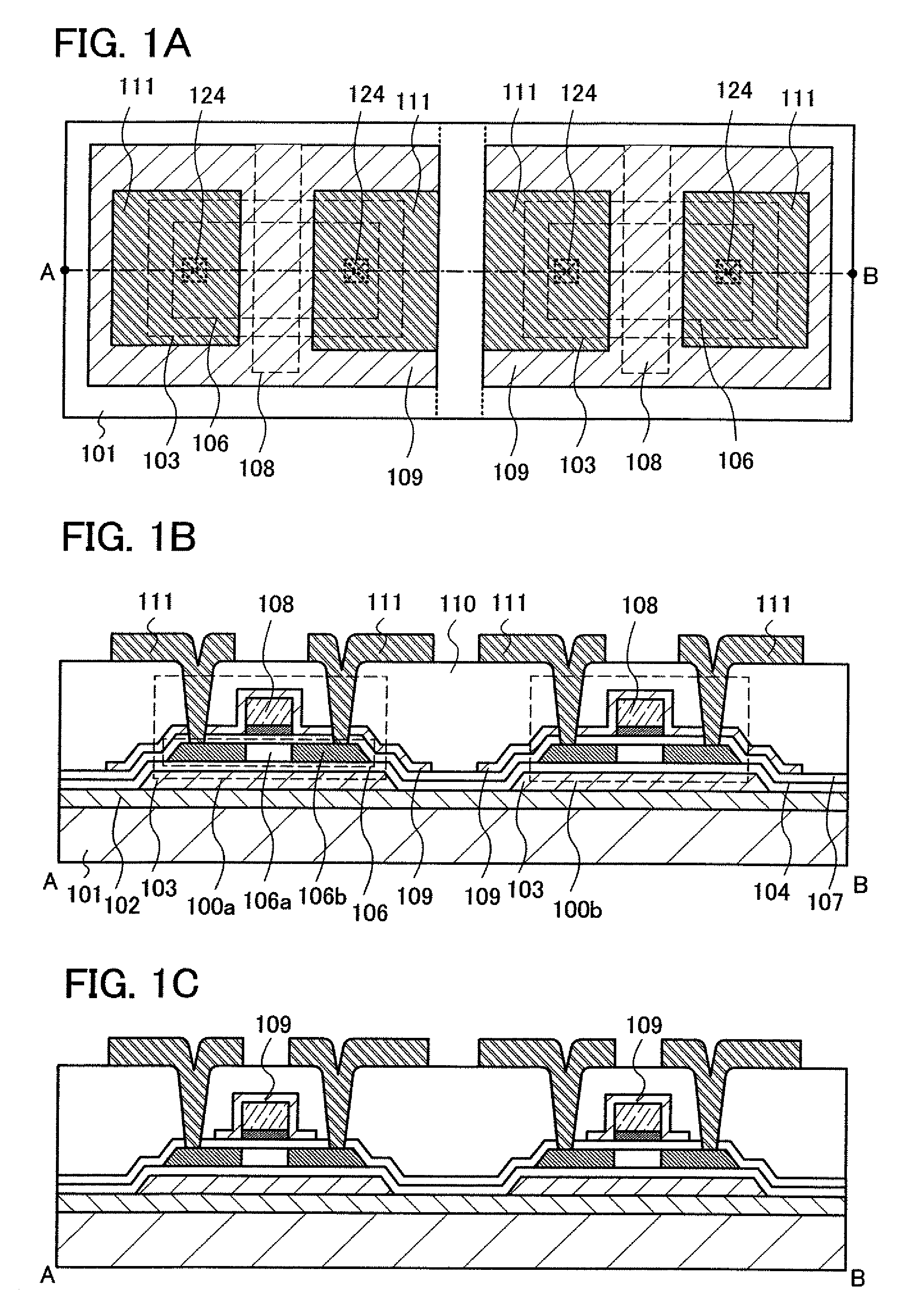Semiconductor device
a technology of semiconductor devices and semiconductors, applied in semiconductor devices, instruments, computing, etc., can solve the problems of reducing the yield of products and adversely affecting the characteristics of elements, and achieve the effects of reducing damage to elements such as transistors, reducing stress, and increasing yield and reliability of semiconductor devices
- Summary
- Abstract
- Description
- Claims
- Application Information
AI Technical Summary
Benefits of technology
Problems solved by technology
Method used
Image
Examples
embodiment mode 1
[0036]In Embodiment Mode 1, an example of a semiconductor device will be described with reference to drawings.
[0037]In this embodiment mode, a reinforcement film is provided to suppress generation of stress in an element such as a transistor, even when external force such as bending is applied to the semiconductor device. In this embodiment mode, as an example, a case is described where reinforcement films formed from a material having an elastic modulus higher than Young's modulus of the semiconductor film, above and below the semiconductor film constituting a part of the transistor.
[0038]FIGS. 1A to 1C illustrate an example of the semiconductor device described in this embodiment mode. Note that FIG. 1A illustrates a top plan view, and FIG. 1B illustrates a cross-sectional view taken along a line A-B in FIG. 1A.
[0039]The semiconductor device illustrated in FIG. 1B has thin film transistors 100a and 100b, which at least include a semiconductor film 106, a gate insulating film 107, ...
embodiment mode 2
[0056]In Embodiment Mode 2, an example of a method for manufacturing the semiconductor device described in Embodiment Mode 1 is described with reference to drawings. Note that in this embodiment mode, the process is described in which after an element such as a thin film transistor is formed over a supporting substrate, the element is separated from the supporting substrate to be transferred to another substrate. In this specification, “transfer” means that an element formed over a substrate is moved to another substrate.
[0057]First, a release layer 121 is formed over a surface of a substrate 120, and an insulating film 102 serving as a buffer layer, and a reinforcement film are formed. Note that the release layer 121, the insulating film 102 and the reinforcement film can be formed successively. Then, the reinforcement film is subjected to selective etching using a resist mask formed by a photolithography method, so that an island-like reinforcement film 103 is formed (FIG. 4A).
[00...
embodiment mode 3
[0095]In this embodiment mode, the case where, in a thin film transistor of the semiconductor device described in Embodiment Mode 1 or 2, an insulating film is formed to be in contact with a side surface of the first conductive film functioning as a gate electrode and an LDD region is formed below the insulating film is described with reference to drawings.
[0096]FIGS. 7A and 7B show an example of the semiconductor device described in this embodiment mode. Note that FIG. 7A illustrates a top plan view and FIG. 7B illustrates a cross-sectional view taken along a line A-B in FIG. 7A.
[0097]The semiconductor device described in this embodiment mode includes the thin film transistors 100a and 100b, and insulating films 130 are provided to be in contact with a side surface of the first conductive films 108 functioning as gate electrodes, which are included in the thin film transistors 100a and 100b (see FIGS. 7A and 7B). The insulating films 130 are also referred to as side walls, and a st...
PUM
 Login to View More
Login to View More Abstract
Description
Claims
Application Information
 Login to View More
Login to View More - R&D
- Intellectual Property
- Life Sciences
- Materials
- Tech Scout
- Unparalleled Data Quality
- Higher Quality Content
- 60% Fewer Hallucinations
Browse by: Latest US Patents, China's latest patents, Technical Efficacy Thesaurus, Application Domain, Technology Topic, Popular Technical Reports.
© 2025 PatSnap. All rights reserved.Legal|Privacy policy|Modern Slavery Act Transparency Statement|Sitemap|About US| Contact US: help@patsnap.com



